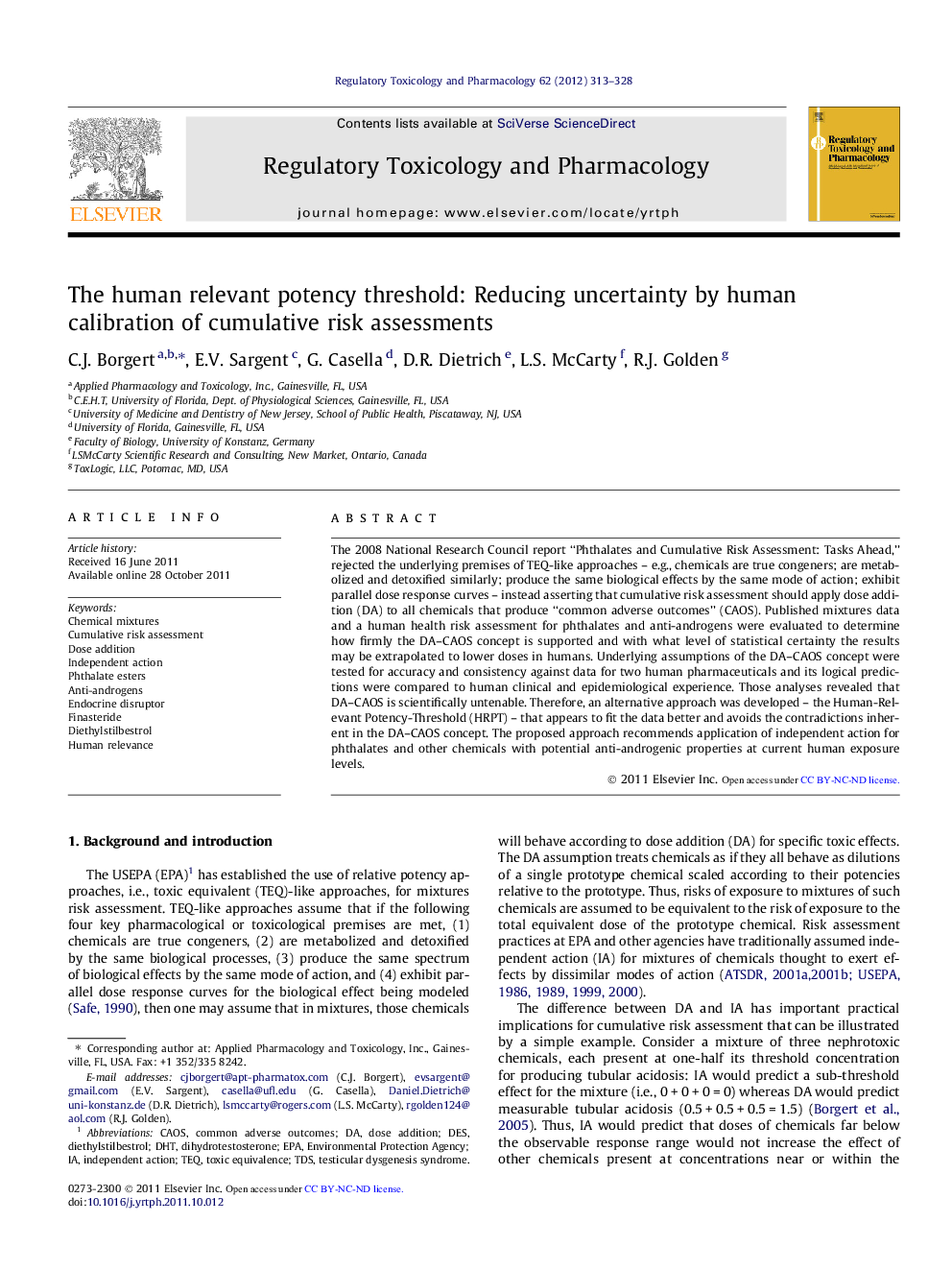| Article ID | Journal | Published Year | Pages | File Type |
|---|---|---|---|---|
| 5857586 | Regulatory Toxicology and Pharmacology | 2012 | 16 Pages |
The 2008 National Research Council report “Phthalates and Cumulative Risk Assessment: Tasks Ahead,” rejected the underlying premises of TEQ-like approaches - e.g., chemicals are true congeners; are metabolized and detoxified similarly; produce the same biological effects by the same mode of action; exhibit parallel dose response curves - instead asserting that cumulative risk assessment should apply dose addition (DA) to all chemicals that produce “common adverse outcomes” (CAOS). Published mixtures data and a human health risk assessment for phthalates and anti-androgens were evaluated to determine how firmly the DA-CAOS concept is supported and with what level of statistical certainty the results may be extrapolated to lower doses in humans. Underlying assumptions of the DA-CAOS concept were tested for accuracy and consistency against data for two human pharmaceuticals and its logical predictions were compared to human clinical and epidemiological experience. Those analyses revealed that DA-CAOS is scientifically untenable. Therefore, an alternative approach was developed - the Human-Relevant Potency-Threshold (HRPT) - that appears to fit the data better and avoids the contradictions inherent in the DA-CAOS concept. The proposed approach recommends application of independent action for phthalates and other chemicals with potential anti-androgenic properties at current human exposure levels.
⺠National Research Council recommendations for cumulative risk assessment were tested. ⺠The recommendation to use dose addition exclusively is scientifically untenable. ⺠A better approach was developed based on data for human pharmaceuticals. ⺠The new approach applies independent action for phthalates at current exposures.
